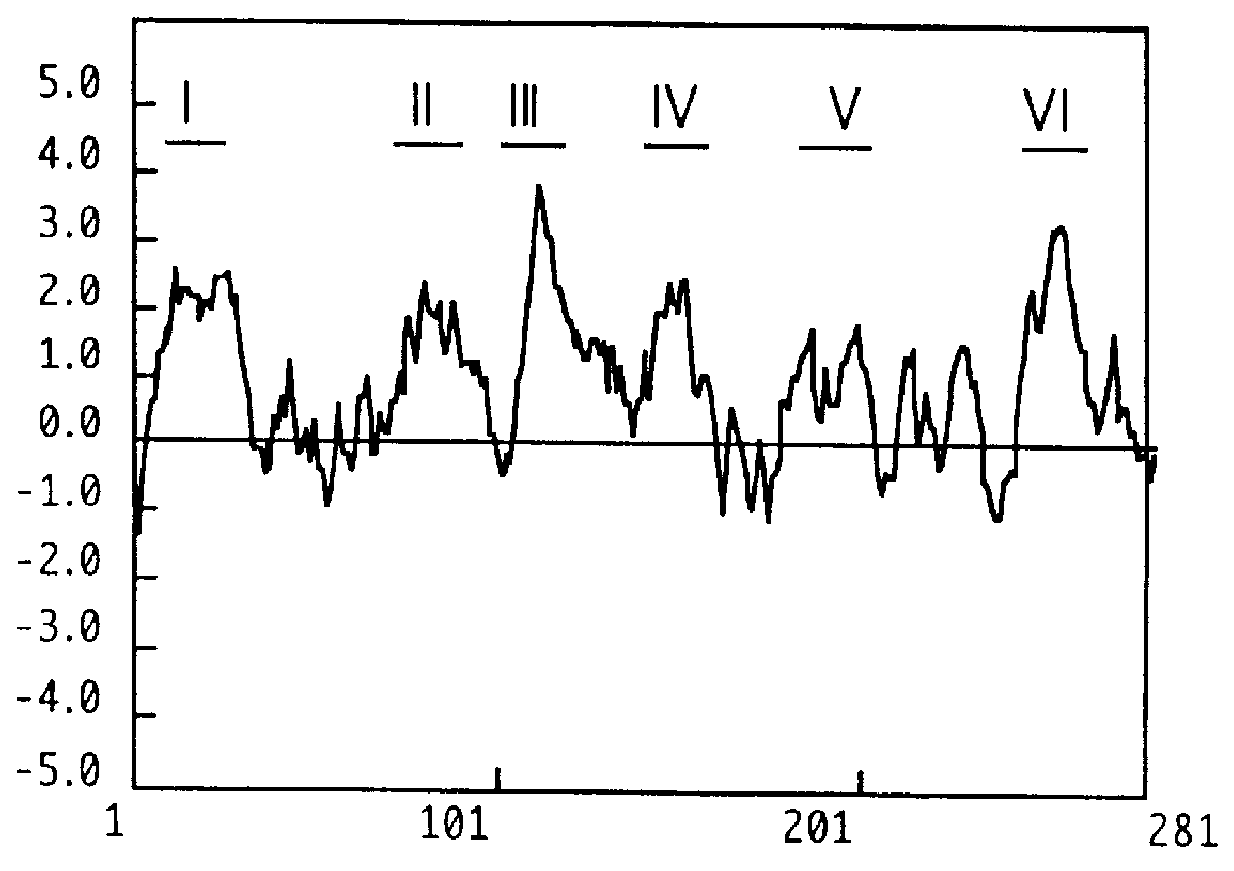Highly regulable promoter for heterologous gene expression
a heterologous gene and promoter technology, applied in the field of new nucleic acid sequences, can solve the problem of not providing a mechanism of inducibility, and achieve the effect of facilitating the reproduction of the operon and modulating the transcriptional activity of target prokaryotic cells
- Summary
- Abstract
- Description
- Claims
- Application Information
AI Technical Summary
Benefits of technology
Problems solved by technology
Method used
Image
Examples
example 1
Nucleotide Sequence, Genetic Organization and Expression of the Bacillus subtilis L-Arabonose Operon
Introduction
The cloning of an additional 7.1 kb chromosomal fragment, located downstream from the araD gene, and the nucleotide sequence of over 11 kb is reported. This region contains a cluster of nine genes: the metabolic genes araA, araB, araD, and six new genes here named araL, araM araN, araP,araQ, and abfA. All genes are comprised of a single transcriptional unit, called the ara operon, whose expression is directed by a single .sigma.-A type promoter identified within a 150 bp DNA fragment upstream from the translation start site of the araA gene. The araN, araP and araQ products are likely components of a binding-protein-dependent transport system and the abfA gene most probably codes for an .alpha.-L-arabinofuranosidase. The promoter region of the ara operon is defined and examined and its expression and regulation using transcriptional fusions of this operon to the E. coli la...
example 2
Study of the Bacillus subtilis L-Arabonose Operon
Introduction
The primary sequence of the products of the genes L-arabinose isomerase, L-ribolukinase and L-ribulose 5-phosphate 4-epimerase respectively, showed strong similarity to the corresponding enzymes of Escherichia coli and Salmonella typhimurium. Transcription of this operon initiates from a .sigma.A-like promoter upstream from the araA gene and is inducible by L-arabinose and repressed by glucose.
Materials and Methods
Unless otherwise stated, the materials and methods used were those described in the Experimental procedure section of Example 1.
TABLE 3 ______________________________________ Plasmids Used Plasmids Genotypes Reference ______________________________________ pMK.sub.4 Amp.sup.R Cm.sup.R Sullivan et al., 1984 pMC11 Amp.sup.R lacZerm Debarbouille et al., 1990 pJM783 Amp.sup.R Cm.sup.R Perego and Hoch, 1988 pSNL1 Amp.sup.R Cm.sup.R araA'araB araD Sa-Nogueira. and (insert fragment of 4.8Kb in pMK.sub.4) Lencastre, 1989...
PUM
| Property | Measurement | Unit |
|---|---|---|
| temperature | aaaaa | aaaaa |
| molecular mass | aaaaa | aaaaa |
| nucleic acid | aaaaa | aaaaa |
Abstract
Description
Claims
Application Information
 Login to View More
Login to View More - R&D
- Intellectual Property
- Life Sciences
- Materials
- Tech Scout
- Unparalleled Data Quality
- Higher Quality Content
- 60% Fewer Hallucinations
Browse by: Latest US Patents, China's latest patents, Technical Efficacy Thesaurus, Application Domain, Technology Topic, Popular Technical Reports.
© 2025 PatSnap. All rights reserved.Legal|Privacy policy|Modern Slavery Act Transparency Statement|Sitemap|About US| Contact US: help@patsnap.com



